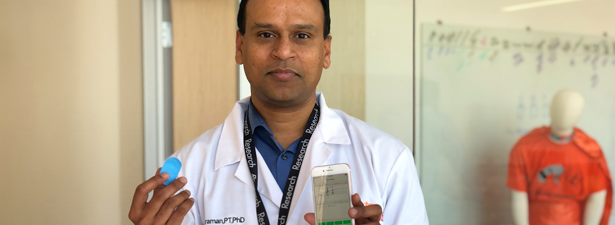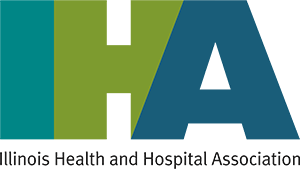Shirley Ryan AbilityLab
Using Innovation to Monitor for COVID-19 Symptoms

Thin, flexible and wireless, an innovative device to monitor for COVID-19 symptoms is the size of a postage stamp—small, but with big potential.
Research teams at Shirley Ryan AbilityLab in Chicago and Northwestern University in Evanston developed the first-of-its-kind wearable for the novel coronavirus, building on previous work with stroke patients.
The COVID-19 pandemic brought an urgent need for innovation, so the teams adapted the device to measure chest wall movements and coughing patterns and intensity. Chest wall movements can uncover irregular or labored breathing. In addition, the device tracks heart rate and body temperature.
 “These sensors have the potential to unlock information that will protect frontline medical workers and patients alike,” said Arun Jayaraman, PT, PhD, a Shirley Ryan AbilityLab research scientist who is leading the algorithm development.
“These sensors have the potential to unlock information that will protect frontline medical workers and patients alike,” said Arun Jayaraman, PT, PhD, a Shirley Ryan AbilityLab research scientist who is leading the algorithm development.
Jayaraman noted the device can potentially identify signs and symptoms associated with COVID-19 early to “reduce the risk of transmission and increase the likelihood of better outcomes.” It works by transmitting information to a HIPAA-protected data cloud. Then, automated algorithms churn out graphical summaries for rapid, remote monitoring.
As part of a study, the devices are worn by Shirley Ryan AbilityLab patients with COVID-19 and healthcare professionals who treat them. Placed at the base of the throat, the device can be worn in the shower and while exercising.
Kelly McKenzie, a Shirley Ryan AbilityLab research physical therapist, joined the study after developing COVID-like symptoms in March. She self-isolated after returning from a trip overseas.
“When you first put it on, you can feel it just because it’s new and different,” McKenzie said of the device. “But after you have worn it for a while, you don’t even notice it."

